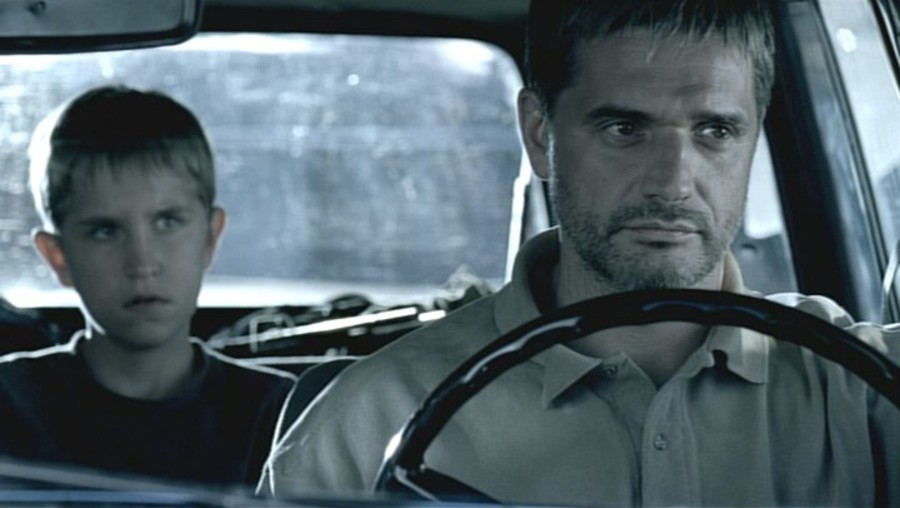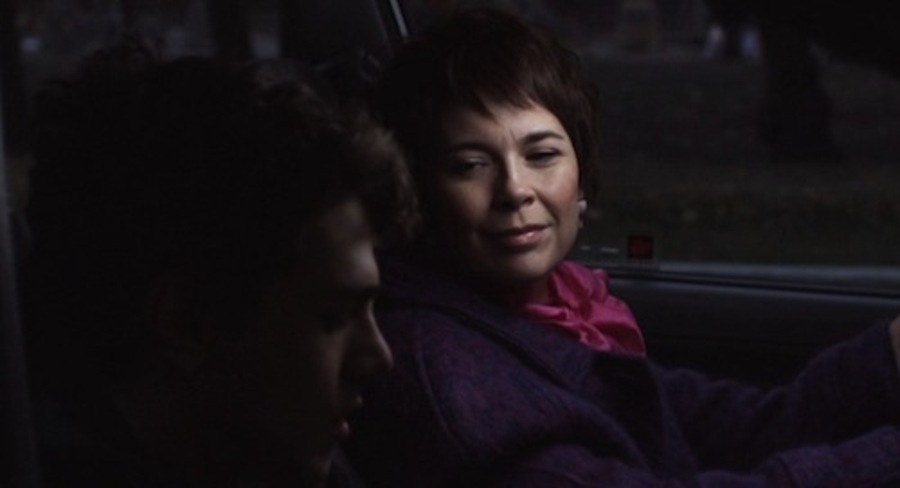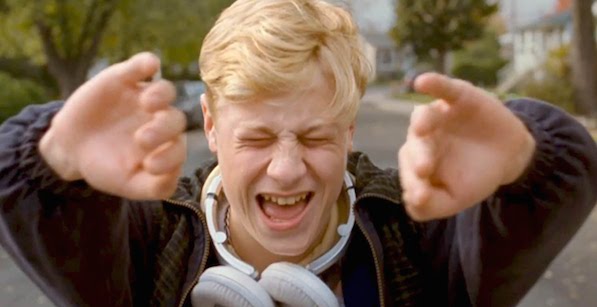
Mystery. Angst. Wonder. And the occasional burst of joy. It’s what filmmakers seem to focus on in their portrayals of childhood. Think feathers floating down around the boys in Zero de conduit’s giddy pillow fight; the camera tracking to see Apu listening for the train in Pather Panchali; Antoine’s wild panting run from reform school to the seashore at the end of 400 Blows; Little Ana’s momentary encounters with her dead mother in Cria Cuervos; Holy Girl’s enigmatic two best friends coiled in a touchless embrace; the exuberant stretching of the aspect ratio in Mommy.
Inchoate, illiterate and more adept at exhibition than expression, children can’t really tell their own stories in a coherent way. Adults can’t properly remember their own childhoods, always reframing them, rehashing them, remembering rather than recounting them very accurately. Just listen to the stories told at reunions of friends or family, it’s Rashomon in a loop, even for the least of moments. So it makes sense that movies centered around children, and how they grow up, tend toward ethereal aesthetics, streaming light, soft focus and silence, close hand-held camera impressions, or from the far distance, just clear of earshot.
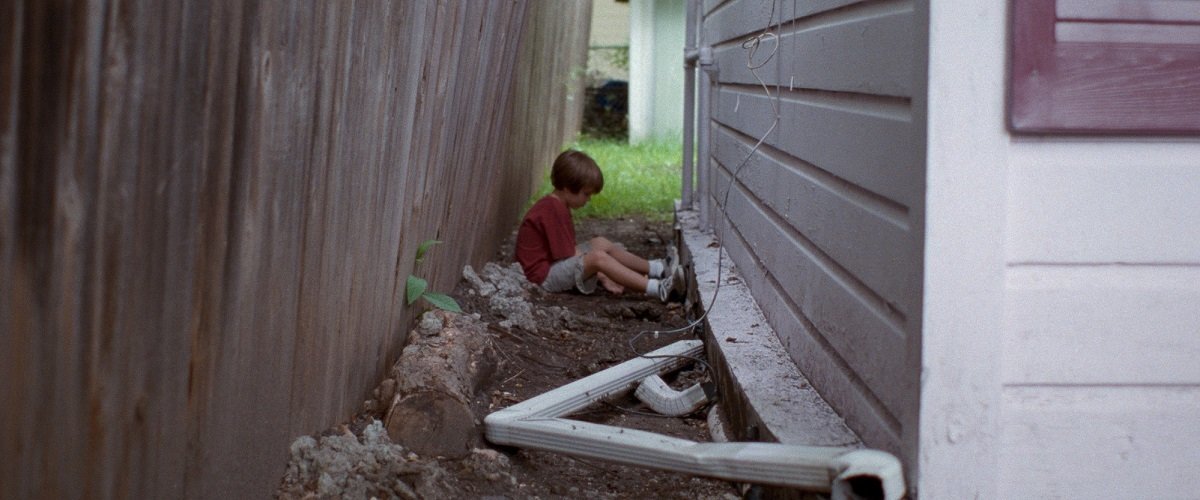
In explaining how he tried to depict Mason’s early years in Boyhood director Richard Linklater told one interviewer: “[Y]ou don’t really know why your parents broke up. Maybe you overheard a little conflict or a fight, but it’ll be a mystery to you your whole life. You won’t ever fully know. So I didn’t want to give the audience any more specifics than the kid would have.” Portraying childhood tests the definitive outlines of storytelling while exploiting the spectral potential of cinema. Here’s a few recent movies about childhood that achieve an illuminating balance.
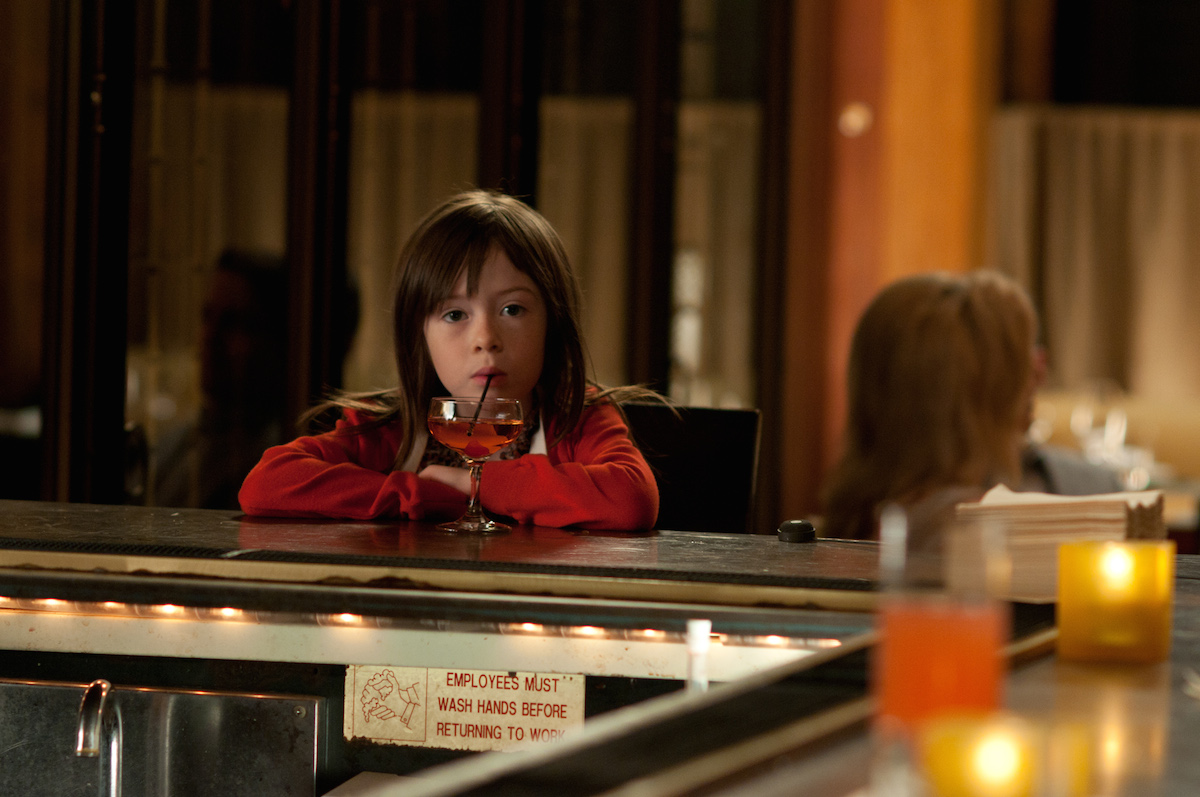
What Maisie Knew
Scott McGehee and David Siegel’s film, based on the Henry James novel, takes and sustains what might be the youngest perspective ever in cinema. The barely school-aged Maisie is a pawn in her parent’s contentious split. While there’s much dramatic fodder in the story of an aging rock star mother and a shady wheeler-dealer father, the camera stays at Maisie’s height and seems to capture her through a dreamy scrim as snippets of fights drift in and the grownups intermittently invade the vertical space, as well as focusing on powerful details that for children become talismans or triggers for larger memories. Maisie seems content to occupy her own delimited world, approaching with a Zen-like serenity just about any change in her circumstance, accustomed to playing alone, waiting forever on school grounds, in stranger’s homes, in towering foyers with only the doorman for company. Verbally inarticulate throughout, she finally exerts a very grownup will, making a choice and giving the audience a rare jolt of child-like joy.
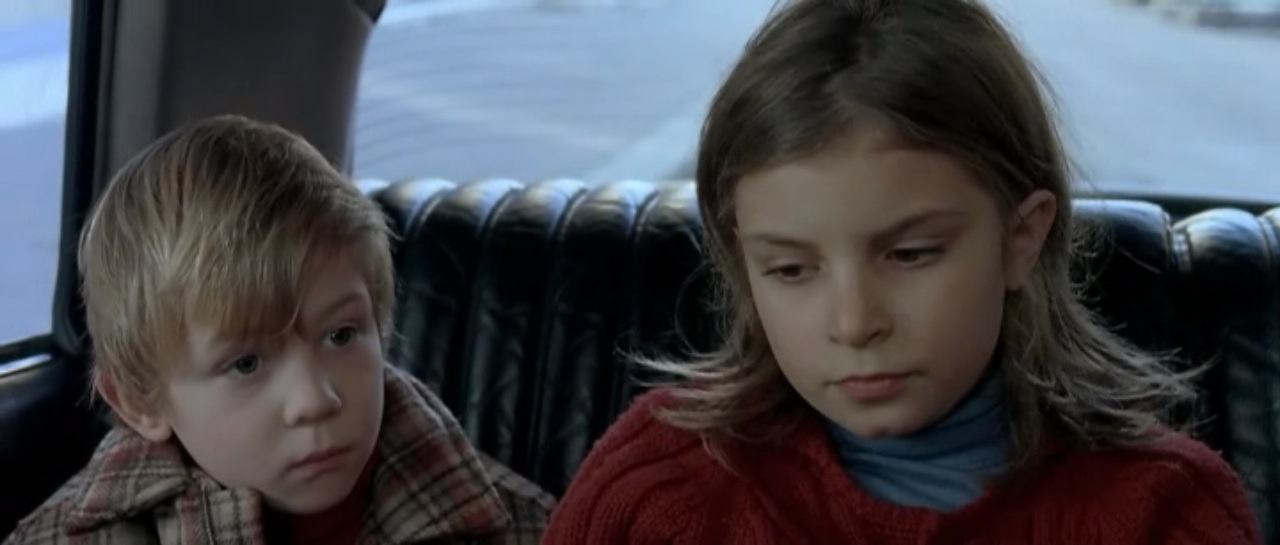
Blame It on Fidel
A fictional contemporary of Cria Cuervos and Spirit of the Beehive’s waist-high, antiauthoritarian heroines, the nine-year-old in the center of Julie Gavras’s first feature film outing is nothing like them. Anna de la Mesa (perhaps named in homage of her Spanish antipode Ana Torrent) is under the thrall of her bourgeois grand-mère and approves of nun-enforced morality and the starched uniform of her exclusive private school world. When the bearded and braless suddenly invade her sphere, Anna becomes the family’s sole paragon of propriety, deploying epic pouts and stern glares to demand a return to the status-quo. Meanwhile her giggly younger brother adapts to the new regime of looser bedtimes, refugee nannies, public schools and midnight manifesto-writers almost instantly. Stationed at her prim altitude, the camera operates under Linklater’s Boyhood constraint, with Gavras allowing us access to only what Anna is directly told or picks up through the walls or cracks in doorways. Like any good conservative Anna changes slowly. When she eventually accepts the new reality, she can finally relax and act her own age.

The Kid with a Bike
Even as J. Hoberman wrote that in The Kid with a Bike “the star seems less jostled by the camera,” Cyril is followed very closely during his testosterone-spiked rages and through his fevered peddling to find his estranged father in the Dardenne brothers searching hand-held style. Doubt and angst are the prepubescent boy’s most prominent emotions as he seeks stability in what must feel like a wisdom-free zone. Like Boyhood’s Mason, Cyril never knows the why of his circumstances—his father, for one, articulates his reasons while Cyril fidgets out of earshot below a window he can’t reach. In keeping with the Dardennes’ worldview, he’s increasingly vulnerable to the disreputable and respectable alike. Somehow, like Maisie, he manages to choose a caretaker, more on instinct than on any visible evidence. The proof of his blind faith comes only in time.
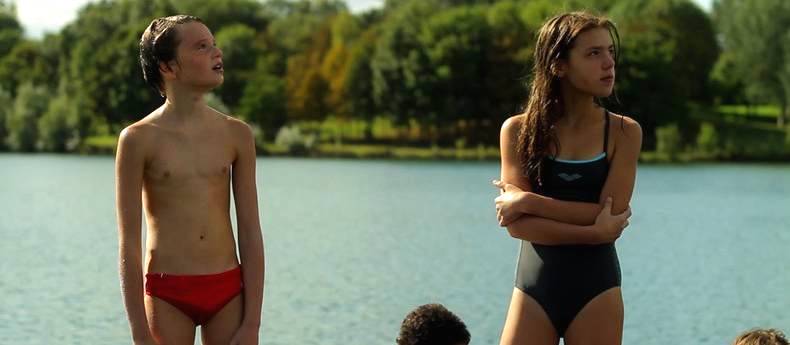
Tomboy
Soft-focus shots of sun-dappled treetops open this story of a prepubescent girl trying to pass as a boy. The film’s initial journey is an opportunity and she grabs it, introducing herself as Mickäel to the kids in her new neighborhood. As a boy, she takes imprudent chances, taking off her shirt during a rough soccer match, peeing in the woods, getting into knock-down fights, inserting a length of Play-doh in her improvised Speedo. Her safest place seems to be with her chatty, girly younger sister, whose exuberant bursts of energy recall the youngest incarnation of Boyhood’s Lorelei Linklater. The film is sweet and melancholy and the images of Mickäel, mostly isolated, surrounded by overt and covert reminders of socially acceptable femininity, reinforce the loneliness of her identity crisis but also the deep reserves of her determination to pass. Acceptance comes in the form of Lisa, whose blue-stripped boater shirt in the last scene conjures up Circé from Chantal Akerman’s Portrait d’une jeune fille de la fin des années 60 à Bruxelles, perhaps a sign that Mickäel’s not the only one in questioning mode.
Lore
Shot through with fairy tale aesthetics, Lore’s story includes the nightmarish along with the magical. At first seeing the world through the distortions of the beveled windows of her home befitting the privileges of high rank, the fourteen-year-old Lore soon confronts an unmediated reality as she is responsible for the survival of her four younger siblings, including the still breastfed Peter, and must drag them through the manmade detritus of war after her Nazi-devoted parents are imprisoned by the Allied forces. From the moment her father shoots the family dog to the price she has to pay to cross a river, Lore grows up quickly, along the way testing the sturdiness of the belief system in which she is thoroughly entrenched. Cate Shortland focuses on the details, which are all the children have to draw on, the ant-laced red-ribboned flesh of an unknown child face down in the hay, the black dye of fresh widow’s weeds, a treasured porcelain reindeer amulet. The shaky, shallow-focus photography enforces the urgency of their immediate needs (and the amorality of how they are met), but also the fragility of children who, like the siblings in Nobody Knows, have the protective shields snatched down from around them.

Nobody Knows
Taken from a newspaper item about a Tokyo woman who left her children to fend for themselves over long stretches, Nobody Knows depicts a Dickensian universe of orphaned children facing hardships, loneliness and terrifying uncertainty. In director Hirokazu Koreeda’s telling the story is stripped of any melodrama. There is no villain, like the easily hated Mr. Creakle or Bill Sikes, but there’s no Artful Dodger either and older sister Kyoko, and the suitcase-sized Shigeru (in a portrayal reminiscent of the cheeky Tomio Aoki in I Was Born But…) and Yuki rely completely on their oldest brother, Akira, for their every need. He’s a more willing Hannelore from Lore, without war to contend with. Fearing social services would split up his siblings, he feeds them, pays the bills (for as long as possible), and brings them the occasional treat, exhibiting an uncanny maturity by giving them gifts in the name of their absent mother. For the production phase of the film, Koreeda moved his cast of nonprofessional actors into a single apartment and shot sequentially over the course of a year so the children would come across as naturally as possible. The camera hones in on the details, little hands, candy boxes, piles of dirty dishes, a stain, dwindling wads of cash, a drop of blood, a worn red suitcase, capturing everything in a washed-out color palette. Even when he cannot prevent the inevitable worst, Akira keeps the family together and in a long wordless sequence finds a way to imbue tragedy with meaning.
The Return
The single defining characteristic of childhood is lack of control. Others decide what you’ll do when you’ll do it sometimes how you’ll do and for how long. Then insist you clean up afterward As we become adults we imagine we’ve wrested this control for ourselves but that’s just an illusion and, I think, the point of The Return, Russian filmmaker Andrei Zvyagintsev‘s remarkable debut. (His Leviathan, about another kind of powerlessness, competes for the 2014 foreign-language Oscar.) Two brothers come home one day to find their totalitarian father, who was inexplicably gone, now inexplicably back. The young Vanya bristles under this stiff new bridle, the older Andrey acquiesces, as they are made to “use their small hands” for all manner of arduous tasks. They go on a fishing trip and instead of familial bonding there’s more random disciplining and, now, the caprice of the natural world to face. Abraham and Isaac, Noah, or even Job split into two, the film’s story can be read as a submission-to-a-higher-will parable: defiance, conformity, authority entwined in an eternal struggle. Shot in the atmospheric hues of perpetually predawn light —even at ostensible high noon Zvyagintsev emphasizes shadows cast by the sun —the film communicates, using what Dave Kehr calls both “highly naturalistic and dreamily abstract visuals,” the pain of our arbitrary existence.
I Killed My Mother
Xavier Dolan upends my earlier declaration that children can’t make films about themselves. Only twenty when he made his stunning feature film debut, I Killed My Mother, a coming-out, coming-of-age film that expresses most articulately the inarticulate state of become a man when others still consider you a child. Six years younger than Orson Welles when Citizen Kane was released, Dolan exhibits the same revolutionary experimentation, and command of the medium, of last century’s North American wunderkind (who, by the way, also wove the autobiographical into his films). Playing the lead as well as directing, producing and writing the script, Dolan employs the wide-screen frame to create distance between him and his kitschy mother and closeness to cultured schoolteacher (the endearing Suzanne Clément) who befriends him. Hilarious color-saturated tableaux and slow-motion cathartic fantasy segments cut quickly back into a neutral reality. He introduces segments with snapshots of details in a room we are about to enter that reveal character and motive for the searing, ongoing conflict his maturing self has with his befuddled mother. A single mother, portrayed by chameleon Anne Dorval, she blames their deteriorating relationship on typical teenage rebellion, which manifests as cursed-laden apoplectic outbursts—until of course she has one herself. Dolan explores another mother-son relationship in last year’s high-spirited Mommy, for which the young director takes even bolder formal risks with the surety of a veteran filmmaker, which by now, at age twenty-five after five acclaimed features, he most certainly is.


